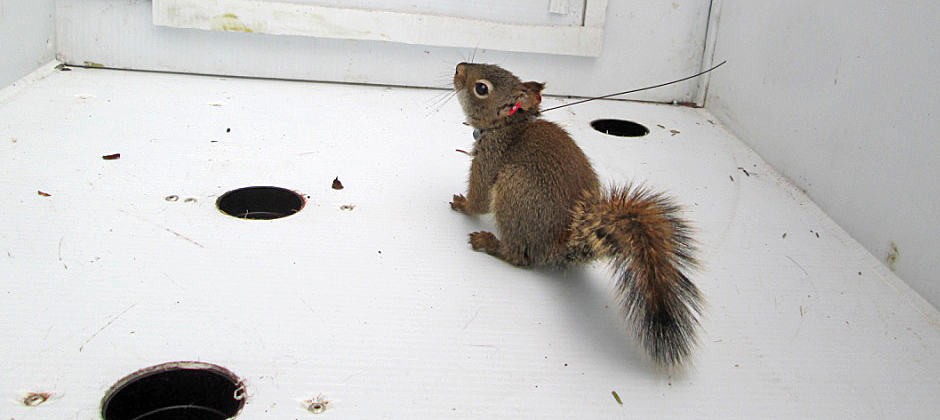Share this article
For red squirrels, there is no winning personality
As April Martinig was studying red squirrel dispersal in the Yukon, she got to know the squirrels pretty well. Over time, she found, their behavior was pretty consistent. Squirrels that would hide from her always hid from her. Squirrels that paid attention when she showed up always did the same.
“Individuals behave differently from each other,” she said.
She wondered if these different consistent behaviors — traits that biologists sometimes call animal personality — affected their dispersal behavior or their survival.
“These things can have costs,” she said.
But when she studied the squirrels’ behaviors, she found that their personalities didn’t seem to affect their ability to survive.
“I was really surprised,” said Martinig, the lead author of a study published recently in Behavioral Ecology. “I was 100% expecting to see there would be selection for or against activity or aggression.”
Instead, she found, it was environmental conditions — factors like food availability, weather conditions and predators — that played a bigger role.
Martinig and her team captured juvenile North American red squirrels (Tamiasciurus hudsonicus) in the Yukon’s boreal forest and gave them a personality test, of sorts. They placed each squirrel in an arena — a box with holes in the bottom allowing them to explore — and recorded videos of the squirrels’ behavior. Did they walk around? Sit quietly? Scratch? Bite?
Then, researchers introduced a mirror to see how the squirrels responded. Some attacked the mirror. Others stayed far away, allowing the team to measure their aggressiveness.
After fitting the squirrels with tags and tiny GPS collars, the researchers returned them to the wild and followed them for two years to see if certain traits they had exhibited in the experiments affected long-term survival.
Martinig expected that aggressive squirrels might fare better in the wild. Instead, any benefits to being aggressive seemed to have been outweighed by unusually difficult conditions during the study period. A lack of resources left many juveniles depending on their parents rather than dispersing. More docile squirrels may have been able to stay in their natal territory, she said, while aggressive squirrels may have been kicked out to find food on their own.
“For now, it appears that being an aggressive squirrel isn’t going to benefit you, but the conditions will change,” said Martinig, who conducted the research as part of her PhD work at the University of Alberta. Longer-term studies might provide a better gauge, she said. “Environmental variation is becoming the norm now,” she said.
The researchers did find changes in the squirrels’ behavior over time, but those changes didn’t seem to be related to squirrels with certain traits getting picked off by predators, but by developmental changes.
“Over time as they got older, their personalities did develop. They changed,” Martinig said.
Header Image:
Researchers used an arena to see how red squirrels reacted and assess their behavioral traits.
Credit: April Martinig








